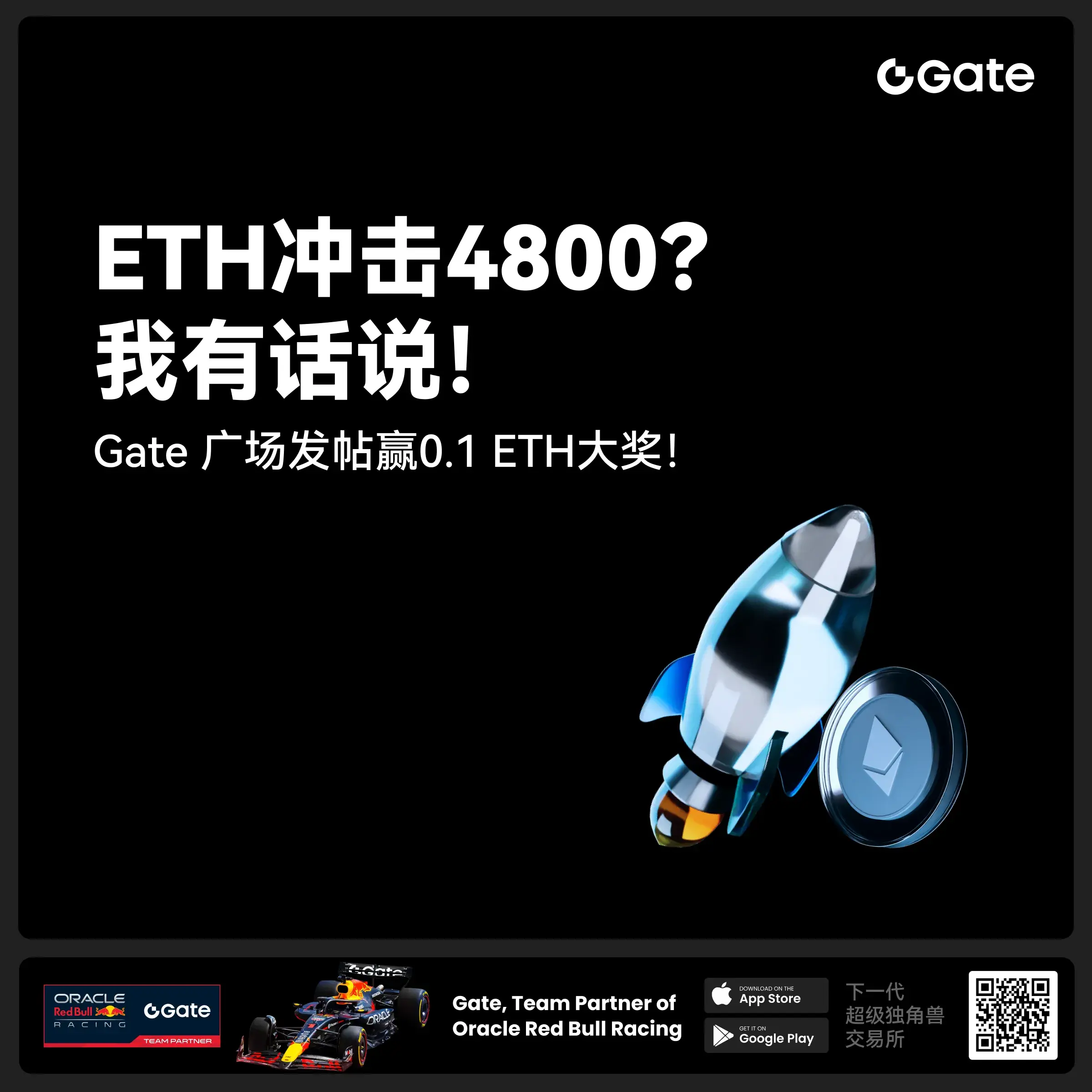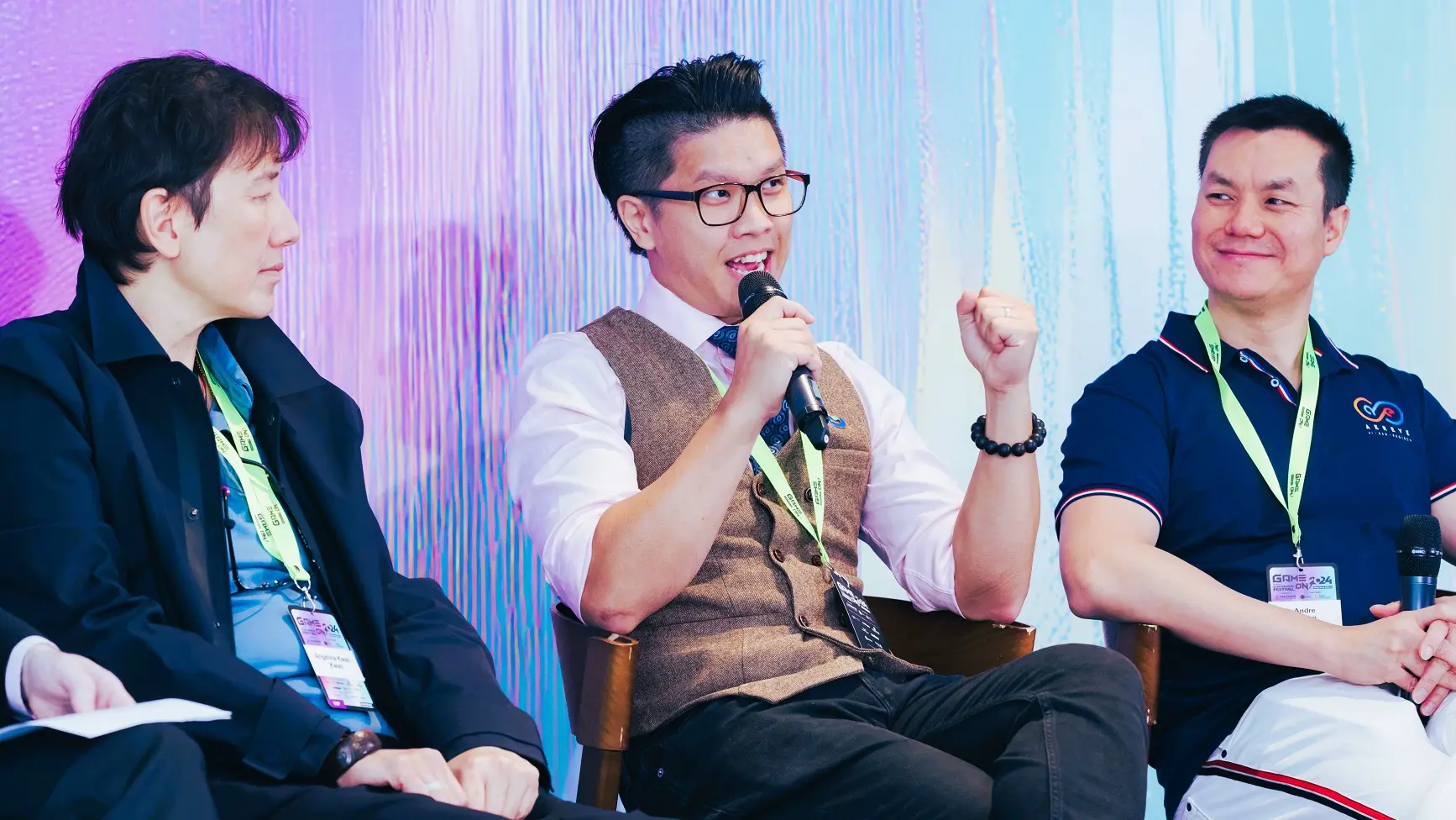- 話題
5k 熱度
79 熱度
485 熱度
422 熱度
39k 熱度
443 熱度
38k 熱度
17k 熱度
6k 熱度
3k 熱度
- 置頂
- 📢 ETH衝擊4800?我有話說!快來“Gate廣場”秀操作,0.1 ETH大獎等你拿!
牛市預言家,可能下一個就是你!想讓你的觀點成爲廣場熱搜、贏下ETH大獎?現在就是機會!
💰️ 廣場5位優質發帖用戶+X瀏覽量前5發帖用戶,瓜分0.1 ETH!
🎮 活動怎麼玩,0門檻瓜分ETH!
1.話題不服來辯!
帶 #ETH冲击4800# 和 #ETH# 在 廣場 或 K線ETH下 圍繞一下主題展開討論:
-ETH是否有望突破4800?
-你看好ETH的原因是什麼?
-你的ETH持倉策略是?
-ETH能否引領下一輪牛市?
2. X平台同步嗨
在X平台發帖討論,記得帶 #GateSquare# 和 #ETH冲击4800# 標籤!
把你X返連結提交以下表單以瓜分大獎:https://www.gate.com/questionnaire/6896
✨發帖要求:
-內容須原創,字數不少於100字,且帶活動指定標籤
-配圖、行情截圖、分析看法加分,圖文並茂更易精選
-禁止AI寫手和灌水刷屏,一旦發現取消獎勵資格
-觀點鮮明、邏輯清晰,越有料越好!
關注ETH風向,創造觀點價值,從廣場發帖開始!下一個牛市“預言家”,可能就是你!🦾🏆
⏰ 活動時間:2025年7月18日 16:00 - 2025年7月28日 23:59(UTC+8)
【立即發帖】 展現你的真知灼見,贏取屬於你的ETH大獎!
- 🎉 #Gate Alpha 第三届积分狂欢节 & ES Launchpool# 聯合推廣任務上線!
本次活動總獎池:1,250 枚 ES
任務目標:推廣 Eclipse($ES)Launchpool 和 Alpha 第11期 $ES 專場
📄 詳情參考:
Launchpool 公告:https://www.gate.com/zh/announcements/article/46134
Alpha 第11期公告:https://www.gate.com/zh/announcements/article/46137
🧩【任務內容】
請圍繞 Launchpool 和 Alpha 第11期 活動進行內容創作,並曬出參與截圖。
📸【參與方式】
1️⃣ 帶上Tag #Gate Alpha 第三届积分狂欢节 & ES Launchpool# 發帖
2️⃣ 曬出以下任一截圖:
Launchpool 質押截圖(BTC / ETH / ES)
Alpha 交易頁面截圖(交易 ES)
3️⃣ 發布圖文內容,可參考以下方向(≥60字):
簡介 ES/Eclipse 項目亮點、代幣機制等基本信息
分享你對 ES 項目的觀點、前景判斷、挖礦體驗等
分析 Launchpool 挖礦 或 Alpha 積分玩法的策略和收益對比
🎁【獎勵說明】
評選內容質量最優的 10 位 Launchpool/Gate - 和其他領域不一樣的是:你想支持一個 Web3 遊戲項目,你必須要「雙投」——既要投時間,也要投錢。

- 🎉【Gate 3000萬紀念】曬出我的Gate時刻,解鎖限量好禮!
Gate用戶突破3000萬!這不僅是數字,更是我們共同的故事。
還記得第一次開通帳號的激動,搶購成功的喜悅,或陪伴你的Gate週邊嗎?
📸 參與 #我的Gate时刻# ,在Gate廣場曬出你的故事,一起見證下一個3000萬!
✅ 參與方式:
1️⃣ 帶話題 #我的Gate时刻# ,發布包含Gate元素的照片或視頻
2️⃣ 搭配你的Gate故事、祝福或感言更佳
3️⃣ 分享至Twitter(X)可參與瀏覽量前10額外獎勵
推特回鏈請填表單:https://www.gate.com/questionnaire/6872
🎁 獨家獎勵:
🏆 創意大獎(3名):Gate × F1紅牛聯名賽車模型一輛
👕 共創紀念獎(10名): 國際米蘭同款球員衛衣
🥇 參與獎(50名):Gate 品牌抱枕
📣 分享獎(10名):Twitter前10瀏覽量,送Gate × 國米小夜燈!
*海外用戶紅牛聯名賽車折合爲 $200 合約體驗券,國米同款球衣折合爲 $50 合約體驗券,國米小夜燈折合爲 $30 合約體驗券,品牌抱枕折合爲 $20 合約體驗券發放
🧠 創意提示:不限元素內容風格,曬圖帶有如Gate logo、Gate色彩、週邊產品、GT圖案、活動紀念品、活動現場圖等均可參與!
活動截止於7月25日 24:00 UTC+8
3
- 🔥 Gate廣場 #GateAlpha积分节# 曬單狂歡開啓!
帶 #Gate Alpha交易分享# ,曬出你的Alpha第三屆積分節高光交易,瓜分 $100 幸運獎池!
🎁 10名幸運曬圖用戶 * 10 USDT
📅 7月4日 12:00 -7月20日 24:00 UTC+8
別忘了,Alpha積分節主獎池高達百萬美元,快來交易 + 曬圖雙重贏獎!
活動詳情:https://www.gate.com/announcements/article/45908
“We’re the Web3+ ecosystem set to become a financial superhighway of Asia”: AMA recap with Velo
As Arunanondchai explained, Velo’s “Web3+” ecosystem currently includes several products. The Universe DEX offers multi-asset trading, spot trading, FX, and perpetuals across various currencies, as well as automated trading bots and social trading features. Universe also aggregates liquidity across different supported chains.
Velo has also been developing Orbit, an enterprise-grade layer for Web3 payments, wallets, and settlements that powers different solutions for merchants.
At the core of it all is the VELO token, which is responsible for driving liquidity, rewards, and settlement flows across the ecosystem. “Our token is designed to motivate people in certain areas and creates a seamless loop between DeFi innovation and real-world value," Arunanondchai added.
According to him, VELO tokens can be used as collateral to issue digital credits within the network: “It relies on the Digital Reserve System, a mechanism designed to lock value and support digital credits. VELO uses various assets to back these credits, including USDL or other stablecoins."
“Our infrastructure connects different parts of the financial services market and makes them available in the Web3 market as well,” he emphasized. “For example, we’ve integrated USDL through our partnership with Paxos. Unlike others, it is a yield-bearing stablecoin, which is quite powerful for areas that might not have access to a stable asset. This allows us to have different use cases, such as providing our users in Southeast Asia with access to U.S.-denominated yields directly onchain.”
Meanwhile, Velo isn’t limiting itself to USDL. “Stablecoins pegged to local currencies, such as the Japanese yen or Chinese yuan, can also support our use cases and enable more seamless liquidity transfers. We’ll see how the market develops,” said Arunanondchai.
Velo’s eventual goal is to build programmable finance, which will open up solutions for the modern workforce’s needs. “If you’re an accountant who has to send money to hundreds of people in different countries, it can be very cumbersome. Blockchain allows you to automate all these payments while factoring in taxes, currencies, and compliance through programmable logic,” the speaker expanded.
To support global deployment, Velo explores licenses for e-payments and cross-border services to help meet the needs of businesses, especially those with stricter compliance requirements, such as publicly listed companies.
However, Velo’s starting point is Southeast Asia, where Arunanondchai sees opportunities. “It’s a very interesting market with a large population and many inefficiencies within the system. That’s why it’s an area where we can use our platform to overcome challenges,” he concluded.
Explore Velo in detail